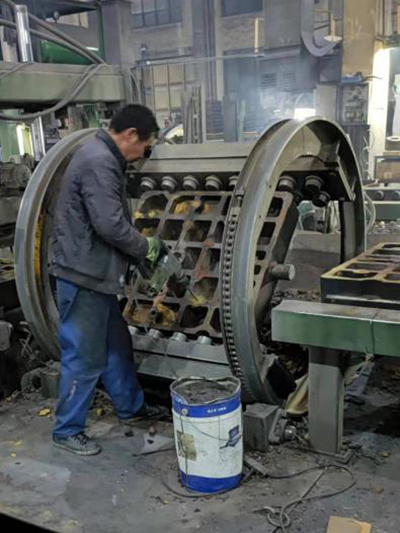Understanding Metal Sand Casting A Comprehensive Overview
Metal sand casting is a widely used manufacturing process that involves pouring molten metal into a sand mold to create intricate shapes and components. This method is particularly favored for its versatility, cost-effectiveness, and the ability to produce complex geometries that other casting methods may struggle with.
Understanding Metal Sand Casting A Comprehensive Overview
The sand casting process begins with creating a pattern, typically made from metal, plastic, or wood, which serves as a replica of the desired part. The pattern is placed in a sand mixture to form a mold. The sand is compacted around the pattern to ensure it retains its shape once the pattern is removed. This step is crucial, as the quality of the mold greatly influences the final product's surface finish and dimensional accuracy.
metal sand casting

Once the mold is prepared and the pattern removed, molten metal is poured into the cavity. The temperature and purity of the metal are vital, as impurities or incorrect temperature can lead to defects such as porosity or misalignment in the finished product. After the metal has cooled and solidified, the mold is broken away to reveal the cast piece.
The casting can then undergo various finishing processes, including machining, sanding, or polishing, to achieve the desired specifications. These finishing touches are essential for applications requiring precise dimensions and surface qualities, such as automotive and aerospace components.
Moreover, sand casting is an inherently sustainable process. The materials used in sand molds can often be recycled and reused, reducing waste and minimizing environmental impact. Advances in technology, such as computer-aided design (CAD) and simulation software, have further enhanced the efficiency of sand casting, allowing for better mold designs and reduced lead times.
In conclusion, metal sand casting remains a fundamental technology in manufacturing, celebrated for its ability to produce complex shapes at a competitive cost. As industries continue to innovate and evolve, the principles of sand casting will likely adapt, ensuring that it remains a relevant and efficient choice for producing high-quality metal components. Whether in automotive, aerospace, or general manufacturing, its impact on modern production processes is indisputable.
Post time:నవం . 15, 2024 17:38
Next:sand ceramic fire brick
